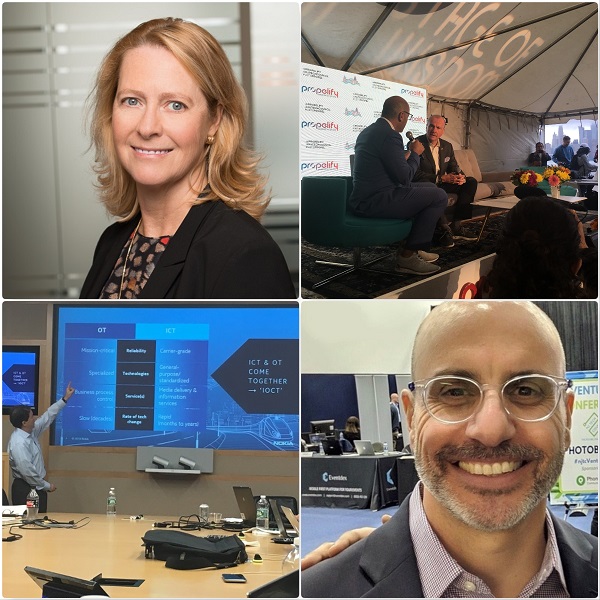Interview with Kathy Timko Who Oversaw “Largest IT Project in US Telecom Industry History”
It was called the largest IT project in United States telecom industry history, and Kathy Timko, of iconectiv (Bridgewater), was overseeing it to completion.
The final May 2018 deadline came and went. The project that she had started five years before was finally finished. But no one noticed, Timko said. Certainly not the 425 million customers in the nationwide system that includes 650 million phone numbers and 1,400 phone companies.
Timko and her team simply went about their business, directing a project to ensure that customers in the United States could keep their telephone numbers when switching providers.
“Nobody really noticed it, which is something you really want to have happen. If someone noticed, then something is broken. But no one noticed, which is the best possible outcome,” she said.
Timko is the executive vice president and head of local number portability administration services at Telcordia Technologies, which does business as iconectiv. In 2015 and 2016, the telecom giant secured a contract with North American Portability Management, under the authority of the Federal Communications Commission (FCC), to become the next Local Number Portability Administrator for the U.S., for $1 billion over seven years, or about $142.9 million per year. The new iconectiv system will save the industry close to $2 billion over the life of the contract, she said.
Timko oversaw the creation of a new nationwide number porting system, as well as the transition from the system that the former contract holder had been operating for close to 20 years. The project, which required reaching more than 6,000 milestones and managing over 17,000 tasks, involved collaboration with hundreds of stakeholders across the telecom industry.
Timko joined Telcordia in October 2013. Early on, she was responsible for setting up and restructuring the organization, “so we could actually take the project on and deliver. We got the selection in March 2015. We got the contract signed in August 2016,” she said.
May 25 was the deadline for Timko and her staff of about 300 people to complete the work. Seven databases that make up the Number Portability Administrative Center were transitioned over the weekends in April and May.
The enforcement and marketing services had been transitioned in March, through a similar process.
The project was massive, Timko said.
“One of the major aspects of the project was the actual transition of the current and historical number porting information from the existing system to the new iconectiv system, making sure the data that migrated over was totally accurate and up to date.
“We also had to coordinate with all the service providers to move their connections from the old system to the new system. Both of these cutover processes were tested weeks and months before the actual live system cutovers, which took place in three different overnight maintenance windows, each lasting about 10 hours. and then migrating all the service providers,” said Timko.
“We started out building the system, the software, the data centers, kind of putting that all together and actually planning the transition for all of the service providers, and for this system the country is divided into seven different regions,” she said.
“We tested the system and the transition procedures for many, many months. We developed all the code from scratch for the new system. We did all our internal testing and we went through a year of testing with the industry. That’s the only way to do it in order to get to a point where you have a flawless transition. We were always looking for what could go wrong and solving it before we got to the point where we cut the system and went live on our software,” she said.
In March, Timko and her team completed the first task: the transition of services providing telephone number identification and porting information to law enforcement, public safety agencies and businesses that must comply with the nation’s Telephone Consumer Protection Act.
Between April and the May deadline, the seven regional databases joined the new system, completing the transition.
“I don’t know of any other project that spans all of the service providers and all of the country at the same time. If it didn’t work, people would not be able to move their phone numbers from one service provider to another,” she said. “When you consider that there were 1,400 service providers involved and 650 million telephone numbers in the database, you begin to understand not only the magnitude of the project, but also the criticality of it. Needless to say, this had to work, there could be no do-overs and we could not say, ‘Let’s try it again.’”
The U.S. number portability system is the largest in the world. Number portability was mandated for landline telephone numbers in 1996 and for wireless phone numbers in 2003. The company also provides number-portability services in more than 15 countries, including India, Pakistan and Saudi Arabia.
Timko, with more than 25 years of experience at telecommunications and technology companies, holds a Bachelor of Science degree in mechanical engineering from Virginia Tech and a master’s degree in computer science from Boston University.
Telcordia traces its roots to Bell Communications Research, or Bellcore. It was the storied telecommunication research and development company that was created as part of the breakup of AT&T. The company has been a major architect of the United States telecommunications system, and has pioneered many services, including caller ID, call waiting, mobile number portability and toll-free telephone numbers.




